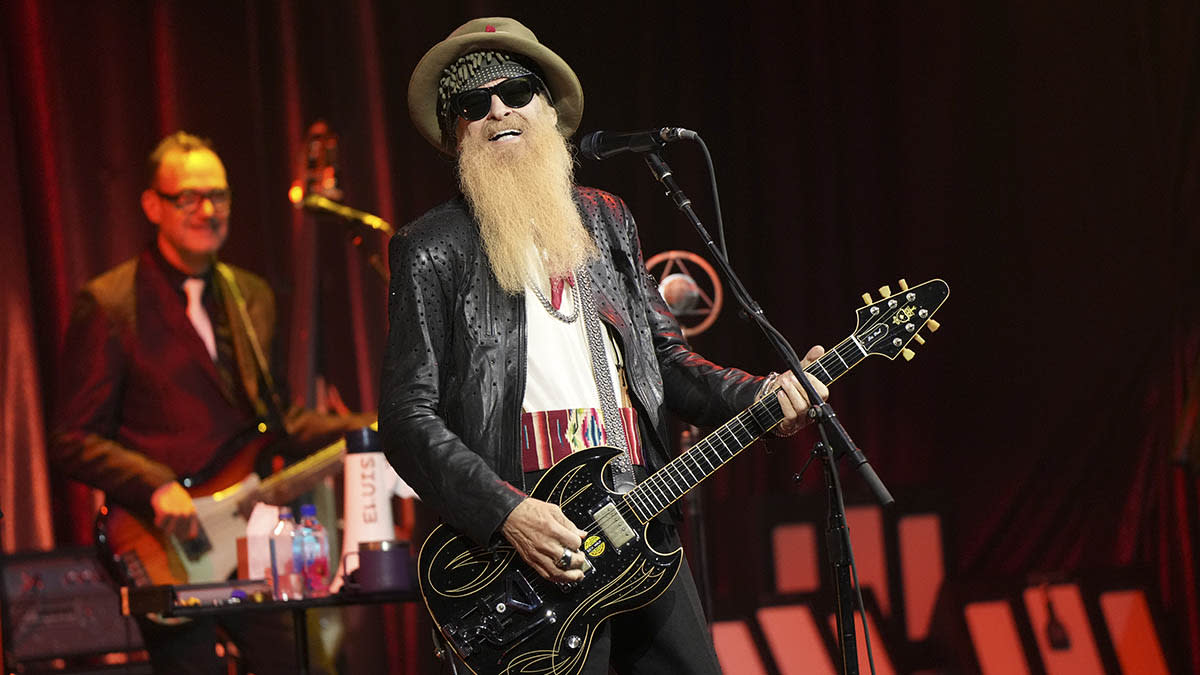5 ways to play a blues turnaround on guitar

The turnaround is the section of a piece of music that leads back to the beginning. In a 12-bar blues, you can think of either the last four bars or the last two bars as the turnaround.
For now, we’re just focusing on the last two. If you nail the turnaround, you’ll sound like you know exactly what you’re doing, and your solos will have satisfying endings.
Although you can just play the minor pentatonic aimlessly over most 12-bars and sound okay, your solos will harmonise more sweetly with the band if you emphasise notes that are found in the chords you’re playing over.
Because we’re in the key of E this month, the chords we’re playing over are E7 and B7. Simply hitting an E note on the first beat of the E7 chord and finishing on a B as the chord changes to B7 will sound more in sync with the backing.
As you get more confident with this you can try using other notes from the chords. The notes E, B, and D all appear in both the E minor pentatonic scale and the E7 chord, so any of them can make great targets over that chord. Of the notes in B7, B and A both appear in E minor pentatonic. The other notes live nearby, too: F# is on the E string, 2nd/14th fret, and D# on the B string, 4th/16th fret.
The key is to listen to the backing track and to your guitar. If you’re only listening to yourself, you won’t notice how well your note choices are working. Learning a few classic turnarounds will help to develop your ear. And, once you’re tuned into the sound of licks that follow the changes, your ear will lead you towards those satisfying sounds.
Example 1. Walking Bassline

You can use this bassline as a rhythm or a lead part. The line in bar 1 very obviously builds from E up to B at the start of bar 2, matching up with the B7 chord and gradually building the momentum to return to the start of the 12-bar blues progression.
Example 2. Harmonised 6ths

The opening two-note shape in bar 1 has notes from an E7 chord (B and G#), and the chromatic movement downwards builds tension. In this key, the open B string sounds good but practise muting it anyway so you can move the lick around the neck and play it in other keys.
Example 3. Rock 'n' Roll Turnaround

This one works extremely well over the walking bassline from Example 1. With a screaming bridge pickup and hard attack it can sound quite Brian Setzer-like, but with a mellower tone it’ll work over a softer blues, too.
Example 4. Tritones

The E7 chord contains G# and D notes, while one fret higher you’ll find A and D#, both found in B7. You can therefore use the same shape for both chords, simply sliding up a fret as needed. We’ve added a final E because it sounds horrible unless you resolve it!
Example 5. Classic Lead Lick

This is a classic lead line typical of Eric Clapton. The first bar mainly uses notes from the E minor pentatonic scale and the E7 chord, and the lick finishes on a B note, emphasising the chord change underneath.

